Written by Andrea Tang
You see the word “sustainable” plastered on the missions and mottos of several clothing brands today, promising that their products are less harmful to the environment. It’s the number one marketing buzz tool amongst fashion brands, both giant and small,but truthfully, what does it really mean to be sustainable?
What makes a piece of clothing “sustainable”?
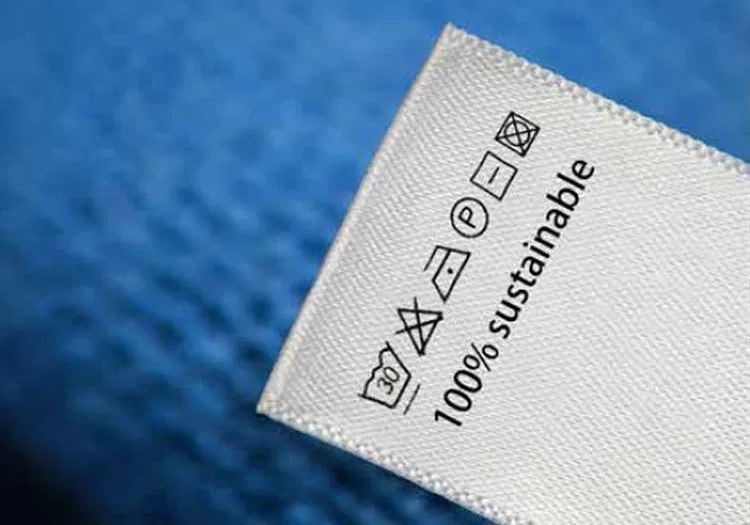
Image source: https://justinekinirons.com/17-sustainable-fashion-brands-that-will-make-you-want-to-quit-fast-fashion/
A piece of sustainable clothing should be made of materials that are vegan, organic, and/or recycled, Sustainable Fashion Matterz reports. For example, 100% organic cotton where no toxic chemicals are used and water is used more efficiently. Materials also can be biodegradable, reusable, renewable, or recyclable, to decrease single-usage.

Image source: https://www.sarahbeekmans.com/safia-minney-slow-fashion-relentless-campaigner/
It is also called ‘slow and fair fashion’, which highlights its whole production, distribution, and marketing processes as opposed to ‘fast fashion,’ which points to everything in the contrary. The materials used are sourced carefully, taking into account whether it is of good quality, won’t be toxic to the environment, and can be used for a long time. Production is done with the environment in mind, which means less water is used and things are discarded properly. Fair and ethical production is also taken into account, where clean, fair, and safe working environments are a priority for the employees. Distribution and marketing can incorporate recyclable packaging with no single-use plastics.
Sustainable fashion vs. fast fashion
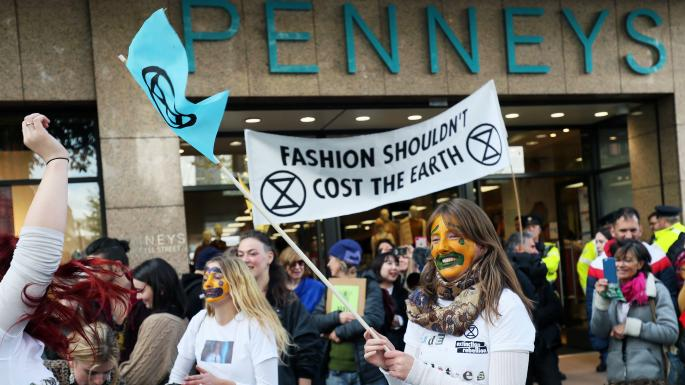
Image source: https://www.thetimes.co.uk/article/extinction-rebellion-takes-on-fast-fashion-at-penneys-m0600nts9
Sustainable fashion focuses more on providing clothing to consumers without putting the environment and other people at risk, unlike fast fashion where it’s a race to see who can produce the most amount of trendy clothing the fastest.
According to The Good Trade, most fast fashion brands produce about 52 “micro-seasons” per year, compared to the standard four seasons of spring, summer, fall, and winter. To give you context, that’s about one new collection every week. Big brands like Forever 21 and H&M allegedly get daily shipments of new styles, while other brands like Topshop introduce 400 new styles a week on its website.
Producing these garments so quickly and making it affordable comes with a price. The quality isn’t as good and it’s like to get thrown out (or used as an old rug in Asian culture) after a couple of wears because it just isn’t designed to last long.
Asian parents-use old clothes for rags =_= pic.twitter.com/YooABcYFh7
— 🐣ℂ𝕙𝕚𝕔𝕜𝕖𝕟𝕎𝕒𝕟𝕘🐓 (@JChickenWang) August 1, 2014
Brands want you to throw it out and then head back to their store to purchase another. People don’t mind the bad quality, because the price justifies it.

Image source: https://www.independent.co.uk/life-style/fashion/environment-costs-fast-fashion-pollution-waste-sustainability-a8139386.html
As said by Lucy Siegle, “fast fashion isn’t free. someone, somewhere is paying”. The manufacturing process of these fast fashion brands allegedly involve dangerous work environments with toxic chemicals and fumes, harmful dyes, and synthetic fabrics which can affect the rivers, lakes, and oceans.
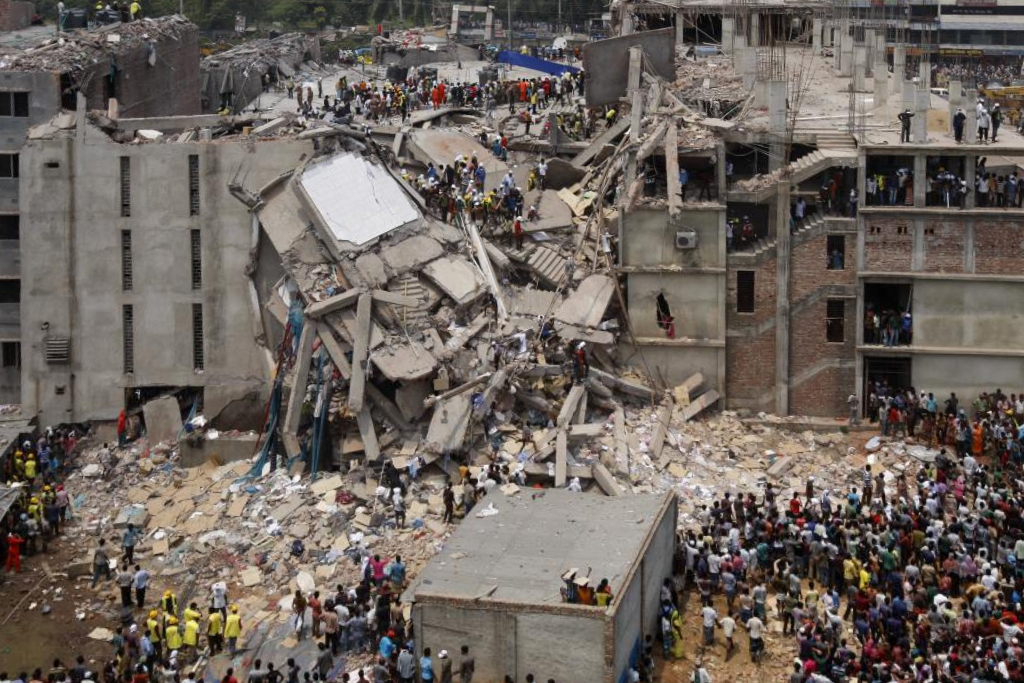
Image source: https://www.racked.com/2018/4/13/17230770/rana-plaza-collapse-anniversary-garment-workers-safety
One of the few examples of these dangerous work environment includes Rana Plaza, a garment factory that Mango, Benetton, and Auchan were linked to in Bangladesh that collapsed in 2013. The total death toll is 1,134 people, The Guardian reports.
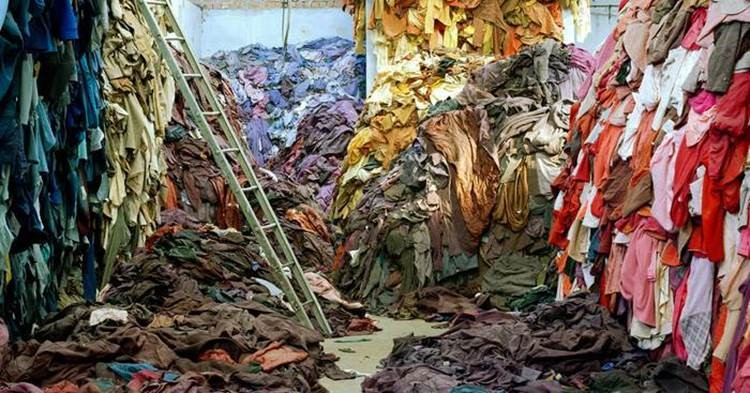
Image source: https://sustainability.uq.edu.au/projects/recycling-and-waste-minimisation/fast-fashion-quick-cause-environmental-havoc
The carbon footprint of fast fashion is huge. The BBC reports 235 million items of clothing sent to landfills in 2018, 700,000 fibers released in a single domestic wash, and 1.2 billion tonnes of carbon emissions produced by the global fashion industry in 2015.
The Ethical Life reports that 17% to 20% if industrial water pollution is from textile dyeing and treatment. This means my red t-shirt, something that seems so harmless, might be polluting the ocean.
How do you go sustainable?
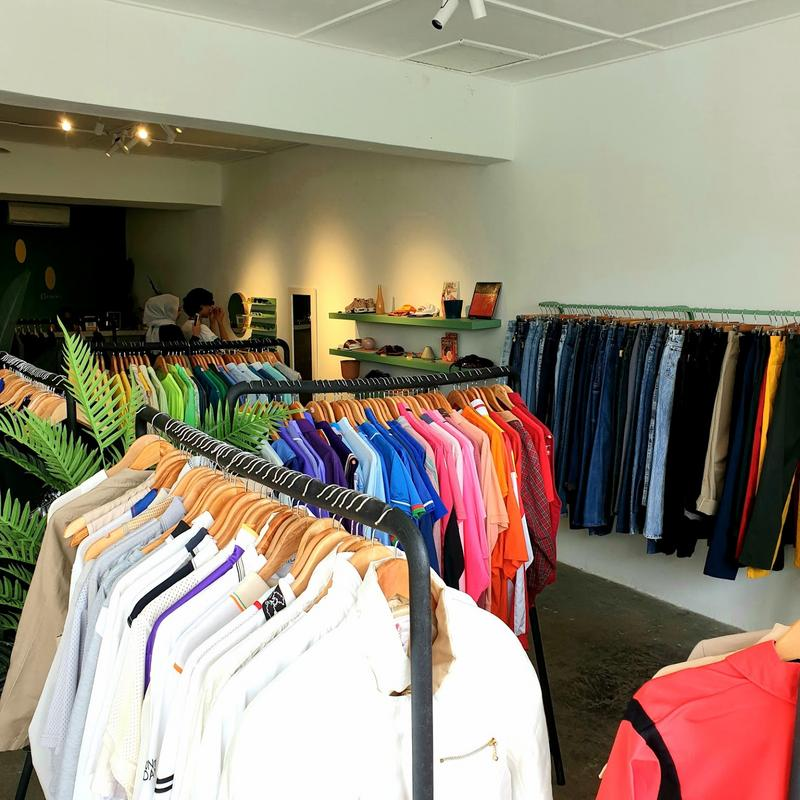
Image source: OkGo
You can start off by supporting sustainable local brands like Kapten Batik or ShopSayang, where they put sustainability as their priority. It might be on the pricier side (usually upwards of RM100), but I swear it is worth it in the long run!
Another way to enjoy fashion without breaking the bank and the environment is to shop second-hand. The stigma around shopping second-hand is slowly dying and being challenged, with lots of trendy bundle and thrift shops like OkGo Store, MODO Japan, and more opening left and right. Find out how to have a better bundle shopping experience here.

Image source: https://www.themrcollection.com/how-it-works/
Other ways you can go sustainable include engaging with clothes-rental services like Rent-A-Dress KL, Dresstal, and Lola Gown! Another way is leasing your clothing out on Facebook groups that are filled with potential rentees.
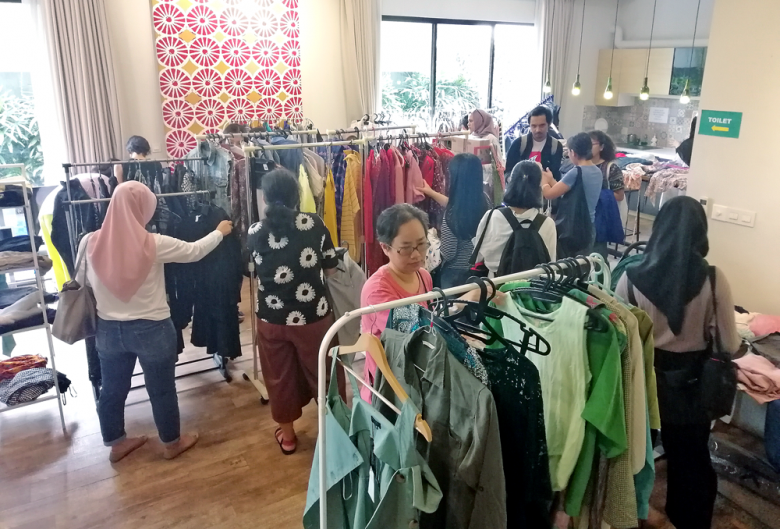
Image source: https://www.thejakartapost.com/news/2019/05/06/as-sustainable-fashion-awareness-grows-clothes-swapping-thrives.html
You can also opt to swap your clothing by participating in physical clothing-swap events or in Facebook groups that are solely made for this. If you have the time, you can even try repairing, redesigning, and upcycling your clothes. Learn how by watching YouTube tutorials or asking your talented friends or family!
Tell us, what are your thoughts on sustainable fashion and how do you practice sustainability?

